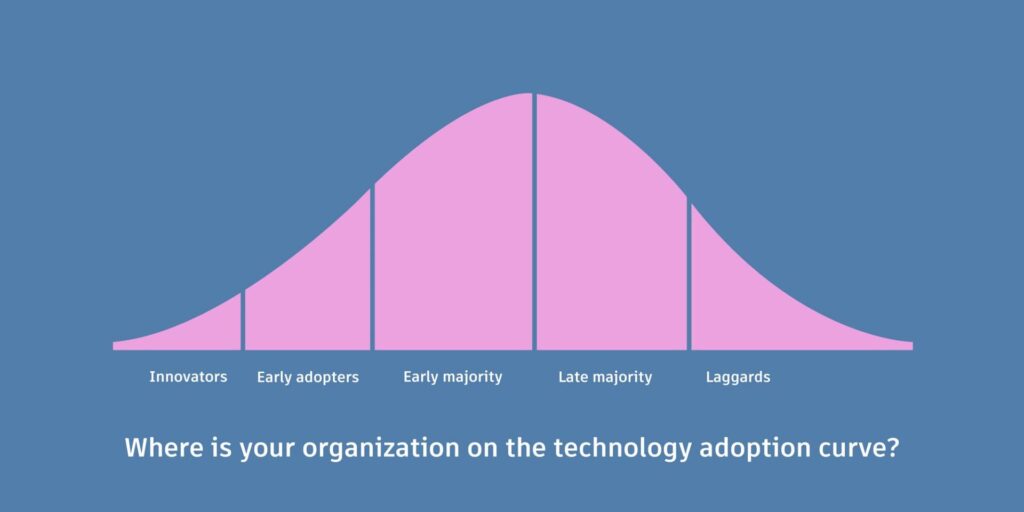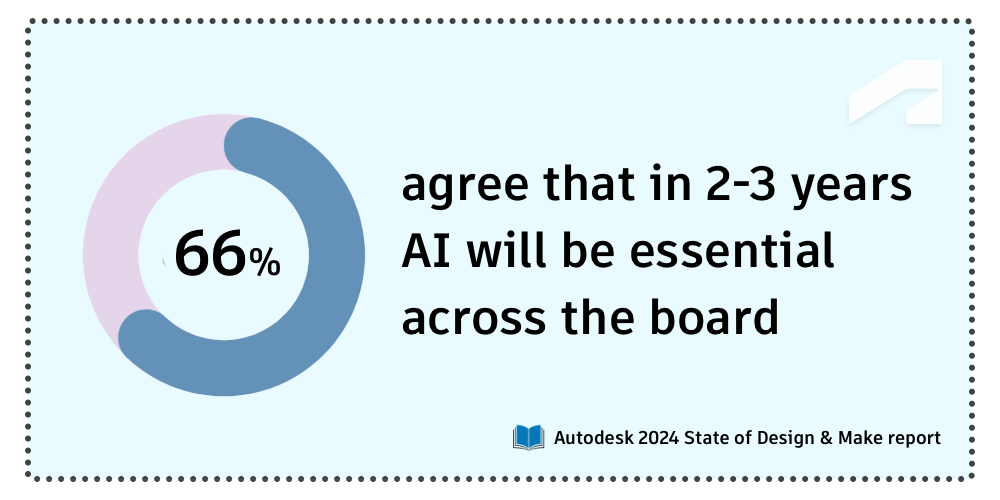& Construction

Integrated BIM tools, including Revit, AutoCAD, and Civil 3D
& Manufacturing

Professional CAD/CAM tools built on Inventor and AutoCAD
12 min read

The water industry is undergoing a state of rapid change, which will only speed up as the climate shifts. GHD research estimates that droughts, floods and storms could wipe $5.6 trillion from the GDP of world’s top economies by 2050. Are we prepared as an industry for the challenges that are unfolding?
Way back in 2012, Black & Veatch wrote a report based on surveys of water professionals, taking the temperature of the industry and attempting to rank the most important challenges facing the industry. A decade later, they returned to the same methodology to find out what had changed. In their very interesting “ten years later” follow-up report, they concluded that things have only grown more complex.

The report describes an industry that is forced to do more with less, turning to digital systems and data to compensate for shrinking staffs and increasing environmental impacts. Considering these daunting challenges, let’s explore practical examples of how rapidly advancing digital technology is helping transform the workflows of industry stakeholders, including utilities, consultants, engineers, and water modelers.
In this post, I’ll walk through the digital transformation journey, first by examining the state of the water industry and the challenges we face. Next, I’ll survey the impact that digital transformation is having on our industry, through the lens of data collected from regional water utilities. Through this lens, we’re able to look at practical case studies and examples of how new digital tools are rapidly improving the workflows and outcomes of water utilities and engineering service providers.

The water industry faces several rising global pressures. For one, it’s forecast that there will be a 55% increase in water demand over the next several decades, coupled with 5 billion people who could suffer from water shortages. However, the challenges don’t just impact the water distribution sector; we’re also facing massive risks in stormwater and flood.
Climate change is driving sustainability mandates, due to the risk of $1 trillion of financial losses from rising sea levels and inland flooding by the year 2050. Additionally, 800 million people are at risk from these challenges. While the industry faces challenges from both sides, distribution and stormwater and wastewater, it’s also being faced with workforce challenges as well, with 1.7 million workers in the water industry up for retirement in the next 10 years. Many utilities are overcoming these hurdles by embracing digital transformation workflows, with 66% having adopted new digital transformation pathways since 2020. Even still, these challenges remain pervasive. We need digital tools and workflows to overcome them.
According to a survey by the International Water Association of 64 global water utilities, there are three key learnings we can take about the way digital transformation is being embraced in water today:
Water distribution as a sector is most closely tied to direct revenue, and innovations and improvements to operations and systems can be directly tied to economic benefits for operators, utilities, and modelers. While we might want to push forward the industry for the sake of the industry, at the end of the day, we must be able to justify our investment in software and workflows – we have to be able to tie our digital transformation journey to economic impact.

Historically, this has been harder to do in the stormwater and flood sector, but digital transformation is enabling modelers to tie investments in resilient stormwater and flood infrastructure to cost savings as well.
The adoption of these digital tools often happens in a diverse and disjointed manner as well. This isn’t a bad thing. It’s the nature of the system we operate in. As such, it’s important that the tools we do adopt exist within an ecosystem that allows for further adoption of new tools and technologies down the line.
So, with these data-based points in mind, let’s explore some practical examples of how digital transformation is making an impact.
Through the lens of the data from IWA, we can see that in distribution, the adoption of new innovative tools can lead directly to a decrease in non-revenue water and system improvements. It’s this direct correlation to economic impact that we see in the distribution sector that often makes it the first place we see innovation. However, this innovation is also taking place in the stormwater and flood sector, and it’s being tied to economic benefits, too. We see this with our own customers like Davidson Water, which saw a 36% decrease in leaks over a 10-year period after leveraging InfoWater Pro’s surge analysis features to pinpoint leaky and at-risk pipes throughout their network.
The City of Fayetteville, another Autodesk customer, estimated a $25 million savings over a 10-year period by utilizing InfoWorks ICM, alongside HEC-RAS and HEC-HMS, to take a worst-first approach at modeling their system, identifying pain points and risk areas, and making strategic system improvements to ward off flooding and damage.
We know that digital transformation is taking a foothold in both water distribution and stormwater infrastructure, but what about that third point: “Adoption is diverse and disjointed”? We must adopt tools that make sense now, while working towards larger benefits for the future. But… what if all of our digital transformation tools existed within one ecosystem? And what if those tools made the barrier to adoption for digital transformation even easier when our workflows do happen in disjointed and disconnected patterns? That’s exactly what we’re seeing happen.
JMT, a large engineering service provider with significant Civil 3D expertise under their belt, has long been an adopter of solutions in the Autodesk AECO portfolio. They were looking for a drainage solution that worked with their customer parts and already established Civil 3D workflows, and they chose to adopt InfoDrainage for their work on the Charleston Low Battery Sea Wall, largely because of its round-tripping capabilities with Civil 3D. Through this project, they were able to quickly onboard and ingest their existing data and create easy-to-understand graphical profiles and flood maps for the project to get stakeholder buy-in of their designs. When adoption happens like this in stages within the same ecosystem, each adoption stage can have a big impact an organization’s ability to solve their challenges.
All of these real-world innovations have already happened thanks to the adoption of new digital tools in water infrastructure. So how can we make sure we’re adopting the right technologies and staying on the right path?
What then, are the core technologies of digital transformation? We boil them down to three: data, simulations, and the cloud.

When hydraulic modelers embrace these core technologies and progress through their digital transformation journey, we see several significant and beneficial outcomes on our water infrastructure.
On the infrastructure front, we see:
There’s also a new kid on the block: AI. Barely considered by water professionals just two years ago, AI and machine learning are rapidly changing the way water professionals approach water challenges.

For example, in 2023 Autodesk introduced the Machine Learning Deluge tool inside InfoDrainage , which allows you to generate a flood map quickly and easily using machine learning algorithms. Today, we’ve updated that tool with additional interactivity allowing you to move stormwater controls around and have the flood map instantly update. Trained on over 10,000 deluge simulations, the machine learning tool operates 25X faster than traditional deluge, saving significant amounts of time.
If you haven’t used design tools like this that are enhanced with machine learning before, it may be tempting to dismiss them as just based on a theory or as a flashy marketing gimmick, but they are already being used practically throughout the industry by early adopters. Our latest survey of water professionals for our 2024 State of Design and Make report, shows that a whopping 66% of our customers believe that in 2-3 years AI will be essential to their work.

An Autodesk customer, Project Centre Limited, were tasking with designing site drainage for a solar field in the UK. With strict watercourse requirements from the local governing authority, they turned to the combination of InfoDrainage and Civil 3D, much like JMT did when re-building the Charleston Seawall. By leveraging the ML Deluge tool, they were able to quickly and accurately generate a flood map of the site to help determine the placement of stormwater controls.
Do these AI tools work as well as their ‘automagical’ reputation suggests? This being the UK, a rain event soon occurred, which flooded the site. The customer went to the site and photograph various locations to document and measure the ponding and channeling from the storm. They compared the photographs and measurements to see if they could be matched up and found out their real-world results were within 3% of the values in the ML Deluge model.

These technologies are already here and already laying the groundwork for the future. All of this is occurring within the same Autodesk ecosystem, allowing you to ingest data, simulate that data, and develop insights and learnings based upon that data much faster and easier than ever before. Through the adoption of new digital tools, we’re able to rise to the challenge, to overcome the risks facing the water industry, and build more resilient, sustainable, and efficient infrastructure – and people.
Digital transformation is not a safe waiting to be cracked, but a path that water utilities, engineers, and modelers venture onto step by step. Water utilities, engineers, and modelers who are embracing digital transformation aren’t doing it because it sounds high tech and forward thinking but because it offers them more practical workflows and better supports their role in the project lifecycle, ensuring they are connected collaborators in thoughtful water work, not someone brought in temporarily to perform an isolated calculation or task.

The industry agrees that digital transformation is how water professionals will be able to overcome our challenges, but we must ensure that we’re ready to embrace the core technologies necessary to walk the path. That’s what we’ve built and are continuing to innovate on here at Autodesk: a comprehensive suite of water software that meets you where you are, helps you ingest data, simulate comprehensively based upon that data, and democratize access to that data using technologies like the cloud. Solutions that make walking that path easier and more straightforward. Better yet, thanks to our continuing work and innovation in AI, the ability to create insights and learnings based upon that data is only increasing as well.
If you’re ready to embrace digital transformation in water, now is the time – the path has become more clear and the technology can help you walk that path faster and more surely. Join us on the journey.
Watch Trevor’s presentation on this topic, which he gave at Autodesk University 2024 in San Diego.
Read our customer stories he references:
Sign up for the One Water Blog newsletter, and we'll keep you updated about our top stories, along with the best content we find online. We only send out a newsletter when we have something interesting to share.